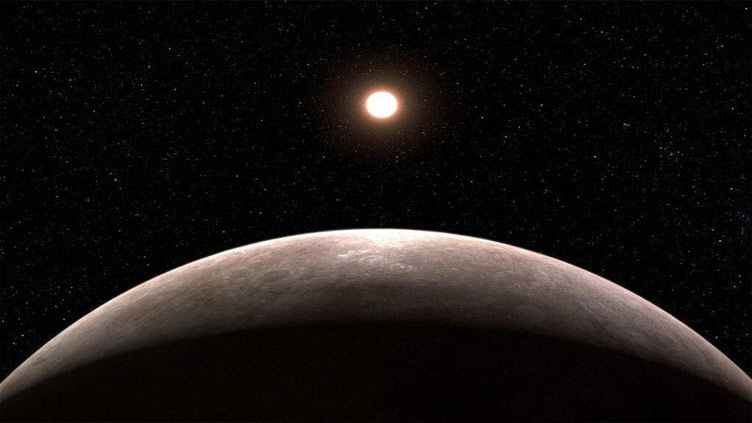James Webb Space Telescope confirms its first exoplanet

Technology
For LHS 475b, it is Webb's first sight of an exoplanet.
NEW YORK (Web Desk) - The James Webb Space Telescope has discovered its first exoplanet -- a planet orbiting another star outside our solar system. Scientists say it is roughly the same size as Earth.
The rocky exoplanet could be seen easily and clearly with just two transit observations, researchers at the Johns Hopkins University Applied Physics Laboratory in Laurel, Md., announced Wednesday at the 241st meeting of the American Astronomical Society in Seattle.
"There is no question that the planet is there. Webb s pristine data validate it," said Jacob Lustig-Yaeger, a researcher at Johns Hopkins University Applied Physics Laboratory. "With this telescope, rocky exoplanets are the new frontier."
The exoplanet, which has been labeled LHS 475b, measures 99% of the diameter of Earth and is located 41 light-years away in the constellation Octans, according to researchers who reviewed data from NASA s Transiting Exoplanet Survey Satellite, or TESS.
LHS 475b is closer to its star than any planet in our Solar System, according to scientists. Given the exoplanet s red dwarf star is less than half the temperature of the Sun, researchers believe it could support an atmosphere.
While Webb is the only operating telescope that is capable of detecting atmospheres of Earth-sized exoplanets, more precise measurements are needed for the team to determine whether there is a pure carbon dioxide atmosphere or no atmosphere at all. Researchers expect to gather more data this summer.
"The telescope is so sensitive that it can easily detect a range of molecules, but we can t yet draw any definitive conclusions about the planet s atmosphere," said Erin May, of the Johns Hopkins University Applied Physics Laboratory.
"There are some terrestrial-type atmospheres that we can rule out," said Lustig-Yaeger. "It can t have a thick methane-dominated atmosphere, similar to that of Saturn s moon Titan."
"Counterintuitively, a 100% carbon dioxide atmosphere is much more compact that it becomes very challenging to detect," Lustig-Yaeger added.
Despite the additional research needed, scientists said Webb has already revealed that LHS 475b is a few hundred degrees warmer than Earth and that it completes its orbit in just two days.
Since launching into space in December of 2021, Webb has been beaming back clear and stunning images of the universe.
In November, the $10 billion telescope captured images of two of the farthest galaxies seen to date, located several billion light years behind the giant galaxy cluster Abell 2744, and captured images of a new star forming.
For LHS 475b, it is Webb s first sight of an exoplanet.
"These first observational results from an Earth-sized, rocky planet open the door to many future possibilities for studying rocky planet atmospheres with Webb," said Mark Clampin, Astrophysics Division director at NASA Headquarters in Washington, D.C.
"Webb is bringing us closer and closer to a new understanding of Earth-like worlds outside the Solar System, and the mission is only just getting started."


